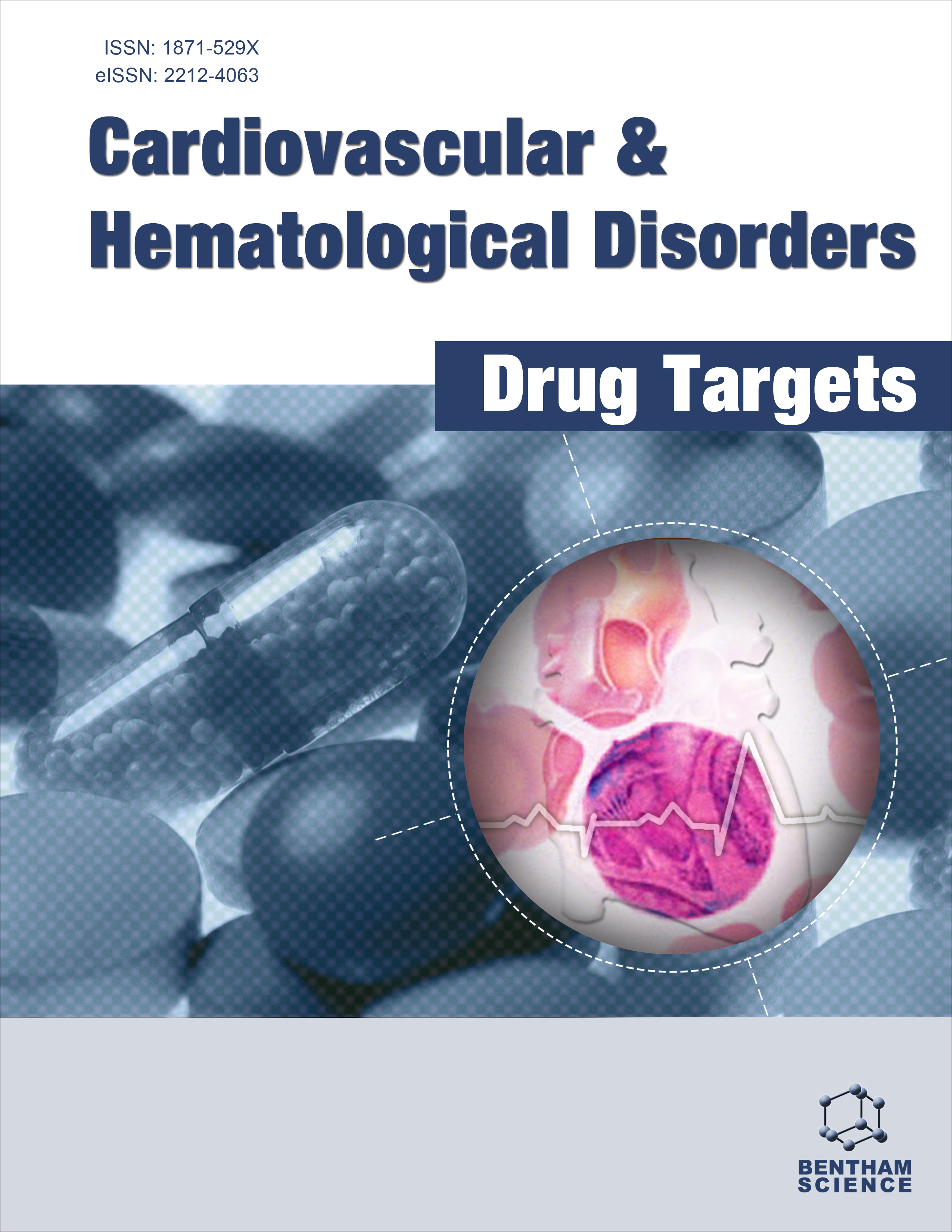-
oa Editorial [Hot topic:Thromboembolism in Patients with Malignancy (Guest Editor: Ioannis Starakis)]
- Source: Cardiovascular & Haematological Disorders - Drug Targets, Volume 10, Issue 2, Jun 2010, p. 82 - 83
-
- 01 Jun 2010
- Previous Article
- Table of Contents
- Next Article
Abstract
It is well known that malignancy is often associated with a hypercoagulable state. Malignant cells may express procoagulant activity, such as cancer procoagulant and tissue factor, which can unswervingly trigger thrombin production. Additionally, normal host cells (monocytes, platelets, and endothelial cells) may also express or release procoagulants in response to the tumour. Cell adhesion moiety p-selectin, is an important activator of haemostatic mechanisms, which is originated in the alpha granules of platelets and the Weibel-Palade bodies of endothelial cells. Studies in animal models have demonstrated that high plasma levels of p-selectin exhibit prothrombotic activity and also represent an independent predictor of venous thromboembolism in cancer patients. Although mononuclear phagocytes are essentially lacking of any procoagulant activity, they may be triggered by tumour necrosis factor (TNF) and produce tissue factor (TF) and other direct factor X activators, which may modulate immunologic, inflammatory, and haemostatic processes but also promote tumour growth and dissemination. A variety of substances derived from various animal and human tumours, such as tumour cell membrane fragments, may directly aggregate platelets leading to an increased secretory release of growth-promoting activity. Recently, the acknowledgment of this fundamental mutual interaction has led to a better understanding of the linkage between platelet stimulation and tumour dissemination, and has offered new intriguing future options to disrupt this interaction and prevent metastatic spread. Platelet activation may also be achieved through other pathogenetic mechanisms such as high plasma levels of von Willebrand factor (Vwf), ADP generation by malignant cells and tumour-provoked thrombin production. Endothelial cells may exhibit procoagulant activity under the stimulus of TNF. Many researchers have reported that TNF increase IL-1 production by the endothelial cells, represses endothelial fibrinolytic activity, and also suppresses thrombomodulin expression and consequently the activation of protein C in the anticoagulant pathway. There are controversial reports concerning TNF levels in cancer patients and although steadily high levels have been noted, many investigators have only infrequently encountered high TNF plasma levels in malignancies.The hypercoagulable state in malignancy may be merely presented as abnormal coagulation tests or with an assortment of clinical manifestations such as migratory superficial thrombophlebitis (Trousseau's syndrome), idiopathic venous thrombosis and or massive thromboembolism, nonbacterial thrombotic (marantic) endocarditis, disseminated intravascular coagulation, thrombotic microangiopathy and arterial thrombosis. It should be noted that thromboembolic incidents may precede the identification of malignancy by months or even years. Approximately 10% of patients with idiopathic venous thromboembolism are, in fact, harbouring an unidentified malignant disorder. In that case, the malignancy can only be detected by the physician's awareness and high index of suspicion which will eventually lead to an extensive diagnostic evaluation. Nevertheless, there is still an ongoing dispute concerning to the issue whether extensive and costly screening for occult cancer is eventually improving prognosis and patient outcome. Although early observations have noticed that mucin-secreting adenocarcinomas of the gastrointestinal tract were associated with an increased thrombotic potential, many non-mucin producing malignancies are also incriminated and until now the efforts to isolate a unique purified procoagulant molecule from mucin, have failed. A variety of comorbidities may adversely influence thrombotic predisposition in malignancy. Long-term immobilization, surgical intervention, the presence of an indwelling central venous catheter and chemotherapeutic regimens with or without adjuvant hormonal manipulation, are well recognized risk factors which increase thromboembolic tendency in cancer patients. Amongst the chemotherapeutic regimens which have been related to an increased thromboembolic incidence, L-asparaginase and tamoxifen are two of the drugs that are most frequently implicated.


